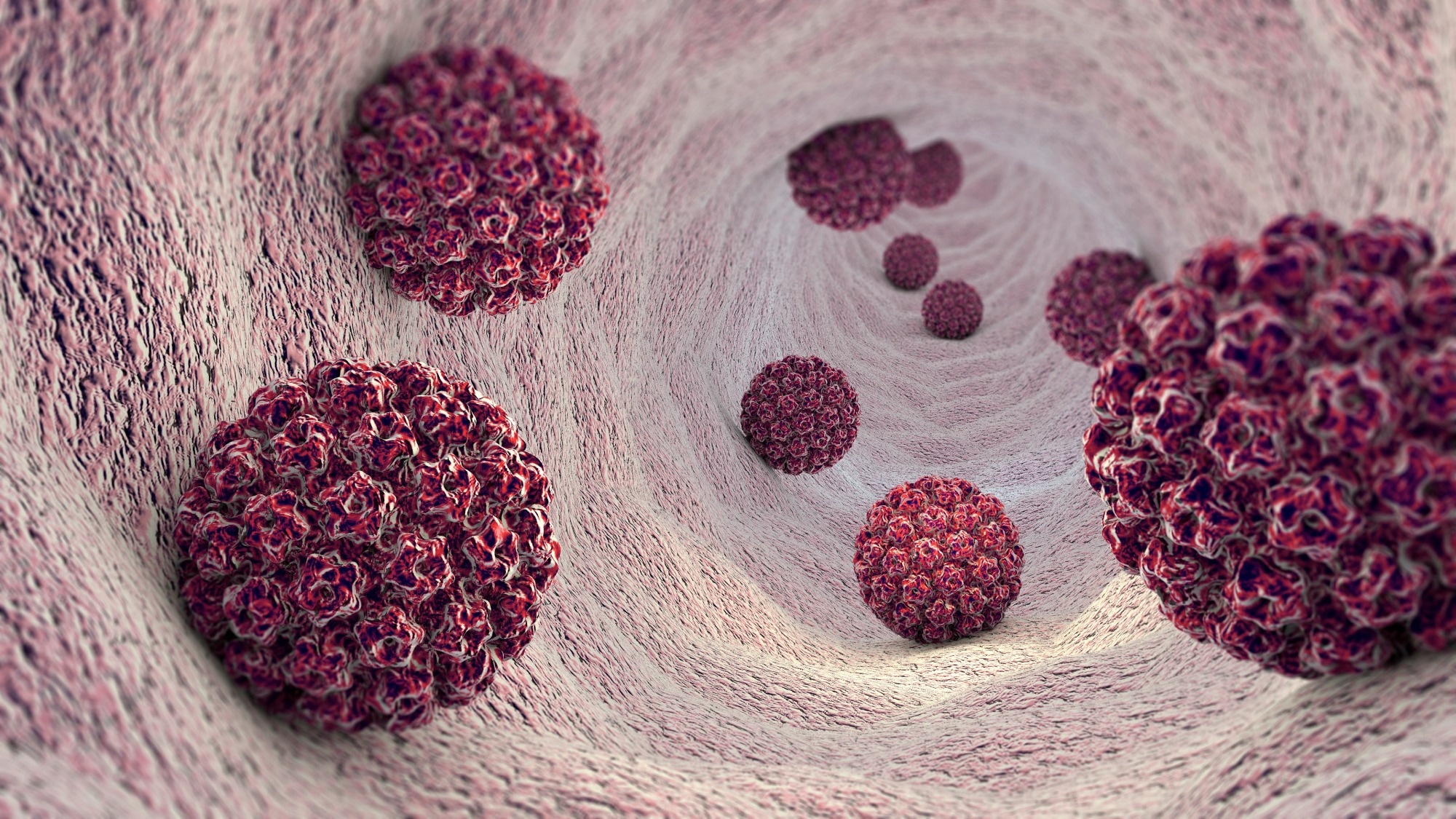In a recent study posted to the Research Square* preprint server while it is currently being reviewed for publication in Scientific Reports, researchers determine whether cervical cancer risk could be assessed using microflora-derived metabolites in the cervicovaginal secretions of human papillomavirus (HPV)-infected females.
 Study: Correlations between microbiota-derived metabolites and cervical precancerous lesions in women with HPV. Image Credit: Naeblys / Shutterstock.com
Study: Correlations between microbiota-derived metabolites and cervical precancerous lesions in women with HPV. Image Credit: Naeblys / Shutterstock.com

 *Important notice: Research Square publishes preliminary scientific reports that are not peer-reviewed and, therefore, should not be regarded as conclusive, guide clinical practice/health-related behavior, or treated as established information.
*Important notice: Research Square publishes preliminary scientific reports that are not peer-reviewed and, therefore, should not be regarded as conclusive, guide clinical practice/health-related behavior, or treated as established information.
What is the vaginal microbiome?
Available evidence indicates that vaginal floral imbalance compromises immune responses and facilitates the progression of HPV infection and cervical squamous intraepithelial lesions (SIL). Likewise, variations in metabolite levels caused by the vaginal flora could be used as cervical cancer risk factors in women diagnosed with HPV infection.
Secretions from the cervicovaginal cavity are the source of cervical lavage fluid. Relative to the collection of exfoliated cervical cells, cervical lavage fluid collection is non-invasive and easy. Thus, obtaining and analyzing these samples may allow researchers to identify biomarkers that could predict the risk of cervical cancer in HPV-infected women.
About the study
In the current study, researchers investigate the association between cervical precancerous lesions and metabolites derived from the vaginal microbiota in HPV-infected women. The aim of this study was to elucidate new insights into monitoring and diagnostic approaches that could be used to prevent cervical cancer in HPV-infected women.
Cervical lavage fluid samples were collected from HPV-infected women with varying degrees of cervical lesions and examined for cervicovaginal microbiota-derived metabolites. The degree to which cervicovaginal microbiota-derived metabolites differ among women with various degrees of cervical lesions was determined. The researchers also characterized a probable functional impact of cervical-vaginal dystrophy induced by HPV infection.
Females aged 30 years or older with sexual and regular menstruation history, non-menopausal, without sexually transmitted infections (STIs), aerobic vaginitis (AV), and bacterial vaginosis (BV), and not taking hormonal contraception were included in the current study. Women who had undergone a total hysterectomy, had immune-related diseases or previously used immunosuppressive medications, had major illnesses such those of the lungs, heart, or kidneys, had taken medicine for cervical disease within a month before the study, were pregnant, or were nursing were excluded from the study.
Colposcopy and cervical biopsy procedures were performed for all study participants. Depending on the cervical biopsy findings, the study participants were classified as having low-grade cervical SIL (LSIL), high-grade cervical SIL (HSIL), and no intraepithelial cell lesions (NILM). Variance inflation factor (VIF) analysis was used to screen the metabolites, whereas small multicollinearity clinical variables were retained for further examination.
Study findings
A total of 200 vaginal microorganisms were similar between the three patient groups in this study, with Lactobacillus being the most abundant species, followed by Gardnerella. Additionally, 149, 80, and 73 species were unique to NILM, LSIL, and HSIL groups, respectively. Notably, women with a greater number of cervical lesions exhibited a greater abundance of Atopobiu, Sneathia, and other bacteria, whereas Streptococcus levels decreased.
Distinct differences in cervicovaginal microbiota-derived metabolites were observed between the NILM and LSIL groups, the most abundant of which included taurine, guanine, uric acid, and xanthine. Comparatively, sucrose, sarcosine, pyrogallol, and cetyl alcohol exhibited the greatest differences between LSIL and HSIL groups. These findings indicate that as the degree of cervical lesions increases, the cervicovaginal microenvironment utilizes amino acids, purines, sugars, and esters in greater quantities.
VIF analysis identified several metabolites that were associated with the vaginal flora. Taurine, for example, was positively correlated with Weissella, Porphyromonas, and Rikenellaceae RC9, whereas this amino acid was negatively correlated with Corynebacterium, Rhodococcus, and Ralstonia.
Conclusions
Metabolites produced by the cervicovaginal microbiota could be exploited as possible biomarkers for the early detection and monitoring of cervical precancerous lesions in HPV-infected women. The study findings also provide new insights into the potential functional ramifications of cervical-vaginal dystrophy caused by HPV.
The current study offers important new insights into the relationship between cervical precancerous lesions and microbiota-derived metabolites among women with HPV infection. Thus, cervicovaginal microbiota-derived metabolites could be employed as a cost-effective and non-invasive method for the prevention and early identification of cervical cancer in females with HPV infection.
Some of the potential limitations and biases of this study include the small sample size, not assessing interfering factors like age, STIs, vaginal disorders, and body mass index (BMI), lack of a control group of healthy women without HPV infection, not considering the impact of HPV vaccination, and not investigating the probable role of other factors such as smoking, alcohol consumption, and diet on the cervicovaginal microbiota and metabolome.

 *Important notice: Research Square publishes preliminary scientific reports that are not peer-reviewed and, therefore, should not be regarded as conclusive, guide clinical practice/health-related behavior, or treated as established information.
*Important notice: Research Square publishes preliminary scientific reports that are not peer-reviewed and, therefore, should not be regarded as conclusive, guide clinical practice/health-related behavior, or treated as established information.